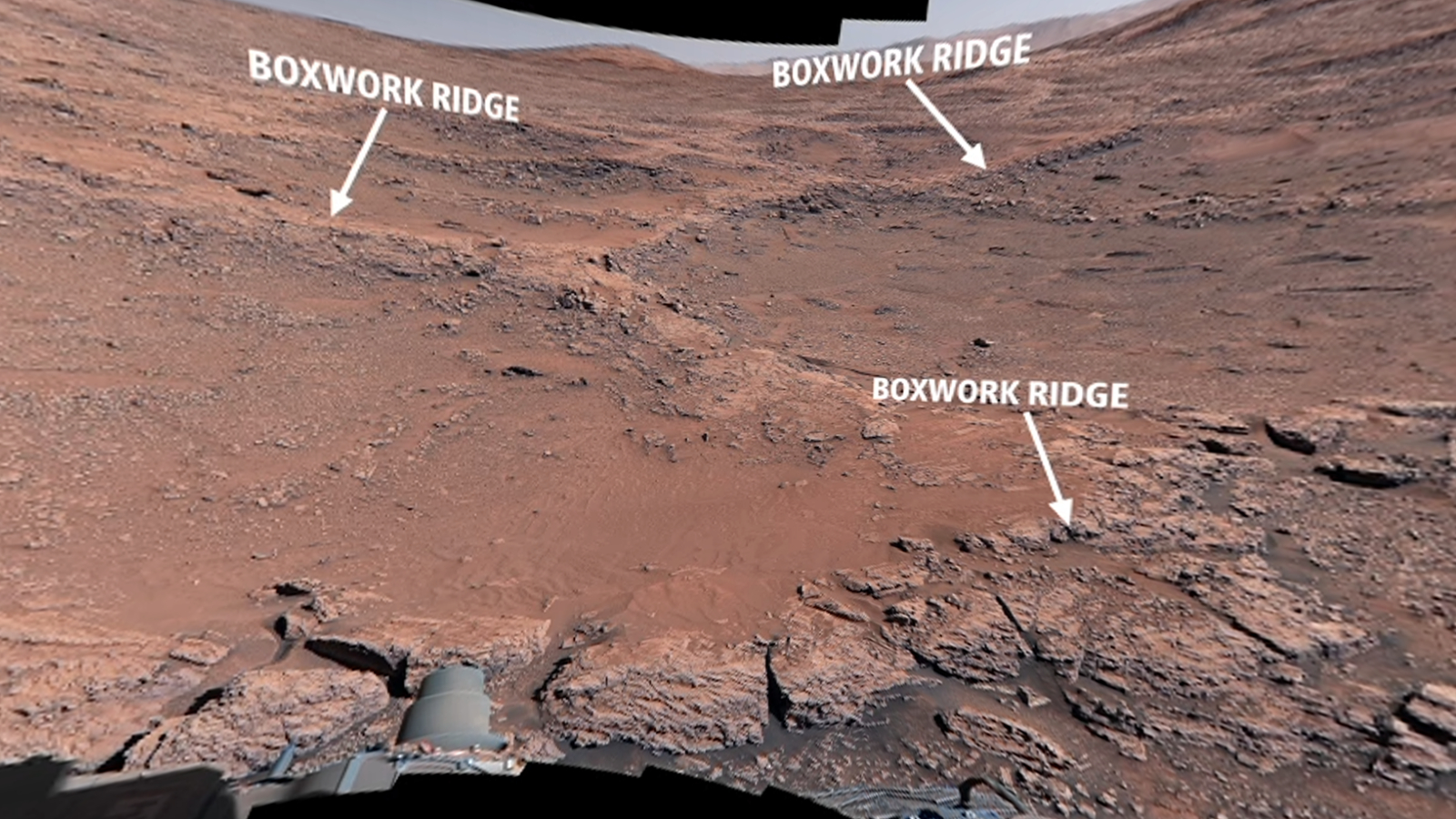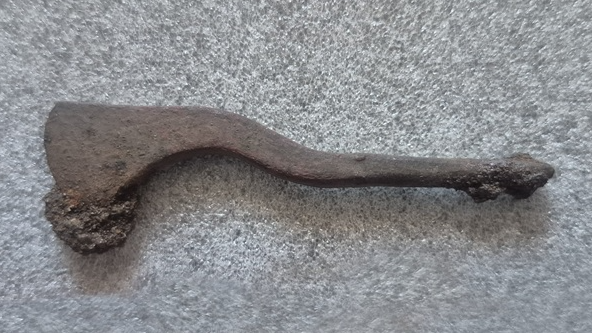Mars rover captures first close-up photos of giant 'spiderwebs' on the Red Planet
NASA's Curiosity rover has snapped its first images of web-like "boxwork" features on the surface of Mars. The zig-zagging rocks could provide clues about the Red Planet's watery past and whether it once harbored extraterrestrial life.

NASA's Curiosity Mars rover has taken the first ever close-up images of gigantic Martian "spiderwebs" on the Red Planet. The zig-zagging ridges, which were left behind by ancient groundwater, could reveal more about Mars' watery past and provide clues about whether the planet once harbored extraterrestrial life, researchers say.
The web-like features, known as "boxwork," are made up of criss-crossing ridges of mineral-rich rocks that infrequently litter the surface of Mars. The patterns can span up to 12 miles (20 kilometers) across and look as if they have been spun by giant arachnids when viewed from space. Yet, until now, these structures have never been studied up close.
Smaller boxwork formations are found on the walls of caves on Earth and form via a similar mechanism to stalagmites and stalactites. Scientists have suggested the same mechanism created these structures on Mars, only on a much larger scale.
"The bedrock below these ridges likely formed when groundwater trickling through the rock left behind minerals that accumulated in those cracks and fissures, hardening and becoming cementlike," NASA representatives wrote in a statement. "Eons of sandblasting by Martian wind wore away the rock but not the minerals, revealing networks of resistant ridges within."
The web-like features should not be confused with the infamous "spiders on Mars" — a geological feature created by carbon dioxide ice on the planet's surface, which was recently recreated on Earth for the first time.
Related: 32 things on Mars that look like they shouldn't be there

Curiosity is currently exploring a patch of boxwork on the slopes of the 3.4-mile-tall (5.5 kilometers) Mount Sharp at the heart of Gale Crater, where the wandering robot touched down in 2012. The rover set out for the area in November 2024 and arrived earlier this month. The features are a priority target for mission scientists because the ridges do not appear anywhere else on the mountain — and experts have no idea why.
Get the world’s most fascinating discoveries delivered straight to your inbox.
On June 23, NASA released the first close-up images of the faux spiderwebs, along with an interactive video on their YouTube channel (see below), which enables you to explore the site in 3D.
The rover also drilled and analyzed some samples of rocks surrounding the web-like ridges and found that they contained veins of calcium sulfate, a salty mineral that is also left behind by groundwater. This particular mineral hasn't been seen so far up Mount Sharp before, so its discovery here is "really surprising," Abigail Fraeman, Curiosity’s deputy project scientist based at NASA's Jet Propulsion Laboratory, said in the statement.
Researchers hope that by studying boxwork up close, they can learn more about Mars' watery past, before the planet's oceans were stripped away by solar radiation. Future findings could also shed light on the giant subsurface ocean that was recently discovered deep below the Martian crust.
Some experts also think that the ridges could finally help settle the debate around whether Mars once harbored extraterrestrial life.
"These ridges will include minerals that crystallized underground, where it would have been warmer, with salty liquid water flowing through," Kirsten Siebach, a Curiosity mission scientist at Rice University in Houston who has been studying the area, previously said. "Early Earth microbes could have survived in a similar environment. That makes this an exciting place to explore."
Mars quiz: Is your knowledge of the Red Planet out of this world?

Harry is a U.K.-based senior staff writer at Live Science. He studied marine biology at the University of Exeter before training to become a journalist. He covers a wide range of topics including space exploration, planetary science, space weather, climate change, animal behavior and paleontology. His recent work on the solar maximum won "best space submission" at the 2024 Aerospace Media Awards and was shortlisted in the "top scoop" category at the NCTJ Awards for Excellence in 2023. He also writes Live Science's weekly Earth from space series.
You must confirm your public display name before commenting
Please logout and then login again, you will then be prompted to enter your display name.

